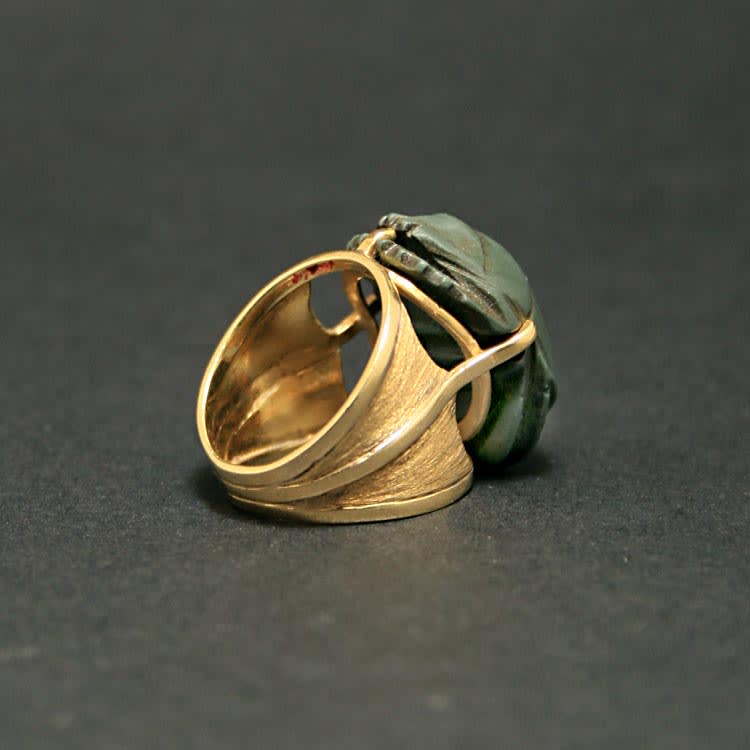Gold Ring Featuring a Green Jasper Scarab, 712 BCE - 300 BCE
Gold and Jasper
FJ.0959
Further images
By far the most important amulet in ancient Egypt was the scarab, symbolically as sacred to the Egyptians as the cross is to Christians. Based upon the dung beetle, this...
By far the most important amulet in ancient Egypt was the scarab, symbolically as sacred to the Egyptians as the cross is to Christians. Based upon the dung beetle, this sacred creature forms a ball of dung around its semen and rolls it in a large ball over the sand dropping it into its burrow. The female lays her eggs on the ground and covers them with the excrement ball that is consumed by the larvae that emerge in the following days as if miraculously reborn. In the life cycle of the beetle, the Ancient Egyptians envisioned a microcosm of the daily rebirth of the sun. They imagined the ancient sun god Khepri was a great scarab beetle rolling the sun across the heavens. The scarab also became a symbol of the enduring human soul as well, hence its frequent appearance in funerary art. Scarabs of various materials form an important class of Egyptian antiquities. Though they first appeared in the late Old Kingdom (roughly 2575–2130 B.C.), scarabs remained rare until Middle Kingdom times (circa 1938-1600 B.C.) when they were fashioned in great numbers. While some were used as ornaments, others were purely amuletic in purpose.





